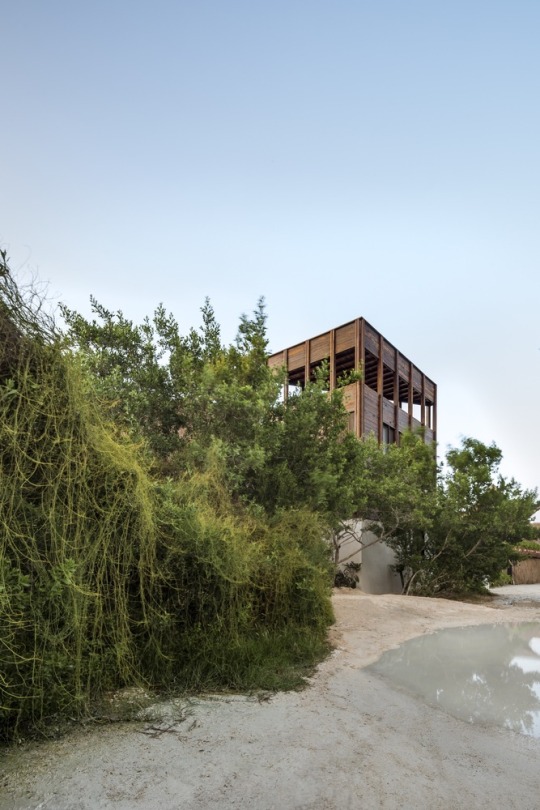#coastal Mexico
Explore tagged Tumblr posts
Text
10 Top Things to Do in the Yucatan Peninsula: Must-See Attractions and Activities
Nestled in the southeastern region of Mexico, the Yucatan Peninsula is a world to discover. I have lived in Cancun for many years and want to share all my favorite spots and must-visit places for first-time explorers of this spectacular region of Mexico. I will cover majestic hidden beaches, ancient Mayan ruins, mystical cenotes, and practical tips on how to move around and travel…
#adventure travel#ancient Mayan culture#authentic travel#beach clubs#beach resorts#Campeche#Cancun#Caribbean coast#cenote diving#Cenotes#Chichen Itza#coastal Mexico#cultural experiences#diving#eco-adventures#eco-tourism#El Cuyo#hidden beaches#hidden gems#historic sites#historic towns#Isla Mujeres#island day trips#kitesurfing#local cuisine#Mayan ruins#Merida#Merida markets#Mexican Caribbean#Mexican culture
1 note
·
View note
Text







Casa Cova, Puerto Escondido, Mexico - Anonimous
#Anonimous#architecture#design#building#modern architecture#interiors#minimal#house#concrete#house design#modern#interior design#beach#beach house#holiday homes#accommodation#retreat#holiday house#thatched roof#wood architecture#timber frame#coastal#beautiful architecture#beautiful house#cool architecture#architecture blog#mexico#mexican architecture#living room
208 notes
·
View notes
Text

#beach#sea#sunset#coastal#mine#seaside#sky#rope#sand#dusk#waves#coast#coastline#Galveston#island#ocean#gulf#gulf of mexico#texas coast#Texas#seashore#beachlife#nautical#mar#playa
79 notes
·
View notes
Photo

Humedal Amarillo
Coastal lagoons, islands, and extensive mangrove swamps are found in the Chetumal Bay, Quintana Roo, Mexico.
by Humberto Bahena Basave, Mexico
Mangrove Photography Awards
#humberto bahena basave#photographer#mexico#mangrove photography#awards#coastal lagoons#islands#mangrove swamps#chetumal bay#quintana roo#aerial photography#nature
441 notes
·
View notes
Text

salt air and the sound of creaking metal in the bitter cold (Bayou La Batre, AL 12/20)
#my pics#southern gothic#coastal gothic#gothic americana#regional gothic#rural abandoned#gulf of mexico#dollcore#angelcore#dirtcore#ethel cain#god in all things#new england gothic
29 notes
·
View notes
Text

#beach#beach life#Galveston#texas beaches#Texas#playa#beach house#beach cabin#texas gulf coast#gulf coast#gulf of mexico#Galveston island#seaside#sunrise#sand#shore#coast#coastal#cabin#house#clouds#waves#seasidemoonrise
20 notes
·
View notes
Text

Coastal spotted dolphin Stenella attenuata graffmani
Observed by kmedak, CC BY-NC
#Stenella attenuata graffmani#coastal spotted dolphin#Cetacea#Delphinidae#cetacean#dolphin#North America#Mexico#Baja California Sur#Pacific Ocean#Gulf of California
35 notes
·
View notes
Text




Huatulco (2) (3) (4) by Panegyrics of Granovetter
7 notes
·
View notes
Text






~ Coastal Moodboard #2 ~
Yesterday I met a good friend of mine on the beach 💙 She had to leave after a little more than hour, and I spent the rest of the day there. I visited 3 beach accesses in total, from South to North. I saw and enjoyed some beautiful birds and water, but not as many seashells as I was hoping. I collected a few lovely common Ark shells, but nothing that really stood out. Because it was a Saturday and there were more people than usual, and because the waves and riptides were particularly strong
1) Mexican Olive tree trimmings from the tree in my garden
2) one of my favorite thrift finds ever!!! I found this absolutely beautiful scallop on a cheaply made necklace for a very low price! I removed it from the necklace and the scallop is on my altar now 🩷 I plan to reuse the wooden beads that were on the necklace for future jewelry pieces
3) Black Skimmer. I haven't seen this species in a long time! But she was so fascinating to watch! You can see in the photo that this bird glides along the water's edge with their mouth open, collecting small fish, crustaceans, and mollusks! She did this back and forth a few times, then went Northward, away from me
4) A pelican in flight! I saw several groups and pairs looking for and hunting fish. Last week at the beach when I did some spiritual work, I saw a group of 10 pelicans!!
5) Sanderling. A species of sandpiper! They're so cute!! 🩷
6) my favorite photo I've taken of pelicans so far!
#coastal#gulf of mexico#south texas#beach#ocean#shells#seabirds#birds#pelicans#sirencore#mermaidcore#oceancore#spirituality#witchblr#witchcraft#texas#herbalist#environmental science#environmentalism#ecology
10 notes
·
View notes
Text

Excerpt from this story from The Revelator:
At first glance the hills and valleys covered in coastal sage scrub oak are little more than a featureless green swath. On closer inspection, however, you can recognize it for what it truly is: the beating heart of one of the most genetically rich ecosystems on the planet. Birds, insects, mammals, fungi, and even some other plants find refuge under the boughs of coastal sage scrub oak, while water drawn up from its deep roots spreads out to sustain ground-dwelling organisms.
Species name:
Coastal sage scrub oak or Nuttall’s scrub oak (Quercus dumosa)
Description:
The coastal sage scrub oak rarely grows more than about 7 feet tall, but it can spread outward a great distance thanks to its lateral branches and multiple trunks. The trees’ small, spiny leaves emerge in the spring soft and bright green, but gradually toughen and darken to a dusty dark green by summer. Their acorns tend to be thin and elongated, almost conical.
Where it’s found:
The coastal sage scrub oak, as its name implies, is found along coastal areas in Southern and Baja California. The full extent of its range is the subject of spirited debate, as it shares many similar physical characteristics with other scrub oaks found more inland. In San Diego County, the remaining populations of coastal sage scrub oak exist in fragmented populations, usually in wildlife reserves, like islands in a sea of urban development.
IUCN Red List status:
Endangered
Major threats:
Urban development destroyed much of this tree’s habitat, and its remnant population still faces this threat, along with several others. The introduction of grasses and other highly flammable nonnative species, like eucalyptus, have increased fire frequency and intensity. Escaped ornamental plants and grasses can outcompete oak saplings for light, space, and water. And climate change is resulting in disruptions to precipitation, which stresses all populations.
My favorite experience:
While collecting tissue samples after a spring rain, I took a moment to look at the tracks imprinted into the soft ground. Animal prints were everywhere — mule deer, raccoon, fox, opossum, roadrunner, and what I hoped were those of an exceedingly large bobcat and not a mountain lion. I rarely saw any of these animals during the day but, thanks to the rain, it was clear that they were all around me — present but hidden within the oaks.
My favorite experience:
What I could see, however, were the many birds flying from tree to tree, reminding me of fish swimming among outcrops of coral. Insects buzzed all around. Galls created by tiny wasps were starting to grow from some of the oaks. By summer, some of these galls would grow to the size and color of a peach, bobbing slowly in wind scented with wildflowers, sunbaked dust, and sagebrush. I knew that under my feet deep roots reached toward the precious groundwater that would sustain the forest during the dry season, and spreading from those roots were mycorrhizal fungi that would work with the oaks to support each other.
I grew up among the firs, cedars, hemlocks, and maples of the Pacific Northwest. I always thought forests needed to be composed of tall, majestic trees christened with carpets of rolling moss. Yet this sea of small, scraggly oaks held so much life. My perspective grew. It’s one thing to read about this ecosystem and another matter entirely to truly see it and understand how precious it is.
5 notes
·
View notes
Text

Isla Mujeres, Mexico, 2015
Taken from the back of a moving golf cart
#I was 18 lol#my grandpa was driving the golf cart and wouldn't stop so I could take pictures of abandoned buildings#so this was the best I could do#iPod touch#isla mujeres#mexico#2015#abandoned#abandoned buildings#urbex#urban exploration#street photography#tropical gothic#urban decay#tropical decay#tropical#gothic#gothgoth#mexican gothic#island#coastal gothic#coastal aesthetic#countryside#small town gothic#isla#travel#tourism#vacation#island vacation#seaside
5 notes
·
View notes
Text





Bougainvilleas in Mexico
4 notes
·
View notes
Text







Punta Caliza Hotel Holbox, Quintana Roo, Mexico - Estudio Macías Peredo
#Estudio Macías Peredo#architecture#design#building#modern architecture#interiors#minimal#interior design#cool architecture#hotel#hotel room#hotel design#tropical#luxury#timber#thatched roof#swimming pool#mexico#coastal#render
82 notes
·
View notes
Text

dear summer,
you are my favorite ~
🌴🩵
palm trees in cancun, mexico
https://society6.com/vintagesurfandprint
#art print#photography#travel#wall art#photography prints#wall decor#society6#summer#home decor#nature#cancun#mexico#tropical#coastal#ocean#beach#sea#palm trees
10 notes
·
View notes
Text

#zipolite#beach#mine#sea#ocean#mexico#waves#cocktails#pina colada#piña colada#pipe#420#overcast#coastal#tropical#Oaxaca
17 notes
·
View notes
Text
Okay, time for me to talk about smth relating to my last reblog.
Forceful displacement as a form of ethnic cleansing/genocide
So basically as my bio states, I am a Coastal Nahua from Mexico, but wanna know where that Coastal comes from?
Originally my people were actually closer to the mountains and rivers of Michoacan, surrounding places like Patzcuaro and Tzintzuntzan. Until we were forcibly displaced by Mexicans, not conquistadors, Mexicans. (And also European immigrants)
We were forced to move from the rivers, highlands, and mountains which were our main dwellings. Many of us moved to the coast for our own safety, many of us were forced to assimilate because of the violence from Mexicans and other settlers. While being on the Coast of Michoacan was part of our historical movements, the Highlands, Mountains, and Rivers were our homes.
Our land, once we fled or were forced to leave, was then claimed by Mexicans, and other Settlers. Many of us left were forced onto ranches near those settlements, these ranches were often in bad spots where we would be forced to assimilate if we wanted to survive.
This happened in the 1800’s and continued into the 1900’s.
We were forced from out from our homelands, displaced into an area where we had to start basically all over again. And in that, many of us continue to live in poverty, and lack access to certain resources.
We did not move willingly, we did not willingly give our lands away, our lands were not peacefully taken from us.
Because of this, many of us have and continue to suffer. That is the intention, the intention is to kill us, our culture, our language, our history, and our future.
This is very similar to what israeli settlers have been doing to Palestinians, forcing them off their lands, so that they can take them and claim them as their own. Trying to erase them. Displacement is a tool of genocide.
#indigenas#indigenous#not mexican#indigenous. not mexican#nahua#coastal nahua#mexican#mexico#palestine
2 notes
·
View notes